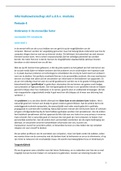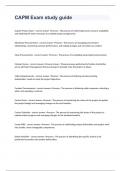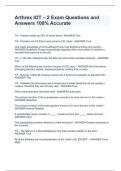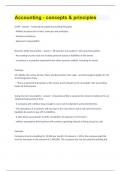PHYS204 – Physics for Scientists and Engineers I
Lab Manual V2.0
Experiment 3: Kinematics
, Experiment 3. Kinematics
INTRODUCTION
The purpose of this lab is to investigate and analyze the movement of an object with uniform velocity and
uniform acceleration, using the theories of kinematics.
Kinematics studies the motions of objects, without considering the forces that may affect that motion, and is
used to calculate values such as velocity, acceleration, displacement, position, distance, and time. In order to
accurately study motion during an experiment, you need to decide on a frame of reference, the initial starting
position of the object, and the positive/negative directions of the motion. Generally, backwards movement and
displacement of an object will be represented by negative quantities, and forward movement and displacement
will be represented by positive quantities.
Constant speed (without direction associated with it) and constant velocity (with a direction) can be calculated
using the following equations:
x2 − x1
⃑ =
v which can be re − arranged to make x2 = x + v
⃑ (t 2 − t1 )
t 2 − t1
You can only say that an object is moving with constant velocity if the objec travels the same distance in equal
time intervals along a linear, non-curved path. For example, a car would have constant velocity if it moved 40
metres, every 1 second. If the number of metres travelled changes, or if the road is curved, then the velocity can
no longer be called ‘constant’.
If this data was graphed, the graph would display a straight line, with a constant slope, and an increasing
displacement along the x-axis. Because the slope is the same throughout this graph, then the instantaneous
speed or velocity at a specific time on this same graph would be the same.
If the object is not travelling the same distance over identical time intervals, then its velocity is constantly
changing, and we can say that it has acceleration. If the velocity is changing by a constant amount over identical
time intervals, then the object has constant acceleration. This can be represented by this equation:
1
x2 = x1 + v1 t + ax t 2
2
Graphing this data would produce a parabola, or a graph that is curved.
If the object that has constant acceleration is in free-fall, then the equation above would be slightly modified to
become:
1
y2 = y + vy1 t + (−g)t 2
2
This indicates that the acceleration used in free-fall scenarios becomes g = 9.80665 m/s2, and it becomes
negative.
Lab Manual V2.0
Experiment 3: Kinematics
, Experiment 3. Kinematics
INTRODUCTION
The purpose of this lab is to investigate and analyze the movement of an object with uniform velocity and
uniform acceleration, using the theories of kinematics.
Kinematics studies the motions of objects, without considering the forces that may affect that motion, and is
used to calculate values such as velocity, acceleration, displacement, position, distance, and time. In order to
accurately study motion during an experiment, you need to decide on a frame of reference, the initial starting
position of the object, and the positive/negative directions of the motion. Generally, backwards movement and
displacement of an object will be represented by negative quantities, and forward movement and displacement
will be represented by positive quantities.
Constant speed (without direction associated with it) and constant velocity (with a direction) can be calculated
using the following equations:
x2 − x1
⃑ =
v which can be re − arranged to make x2 = x + v
⃑ (t 2 − t1 )
t 2 − t1
You can only say that an object is moving with constant velocity if the objec travels the same distance in equal
time intervals along a linear, non-curved path. For example, a car would have constant velocity if it moved 40
metres, every 1 second. If the number of metres travelled changes, or if the road is curved, then the velocity can
no longer be called ‘constant’.
If this data was graphed, the graph would display a straight line, with a constant slope, and an increasing
displacement along the x-axis. Because the slope is the same throughout this graph, then the instantaneous
speed or velocity at a specific time on this same graph would be the same.
If the object is not travelling the same distance over identical time intervals, then its velocity is constantly
changing, and we can say that it has acceleration. If the velocity is changing by a constant amount over identical
time intervals, then the object has constant acceleration. This can be represented by this equation:
1
x2 = x1 + v1 t + ax t 2
2
Graphing this data would produce a parabola, or a graph that is curved.
If the object that has constant acceleration is in free-fall, then the equation above would be slightly modified to
become:
1
y2 = y + vy1 t + (−g)t 2
2
This indicates that the acceleration used in free-fall scenarios becomes g = 9.80665 m/s2, and it becomes
negative.










